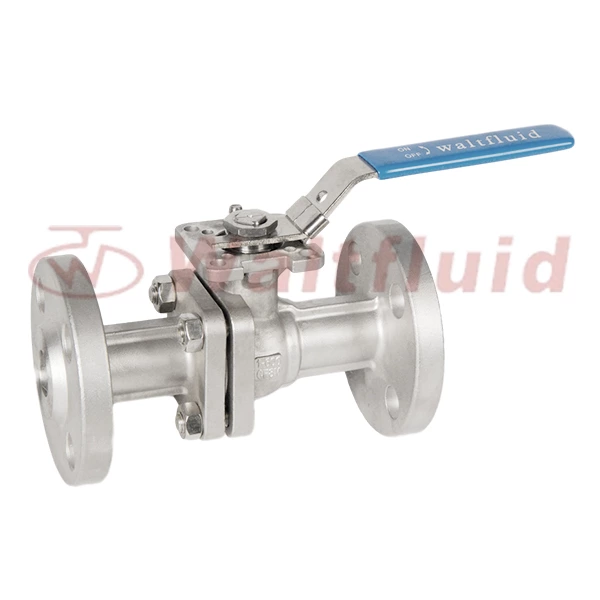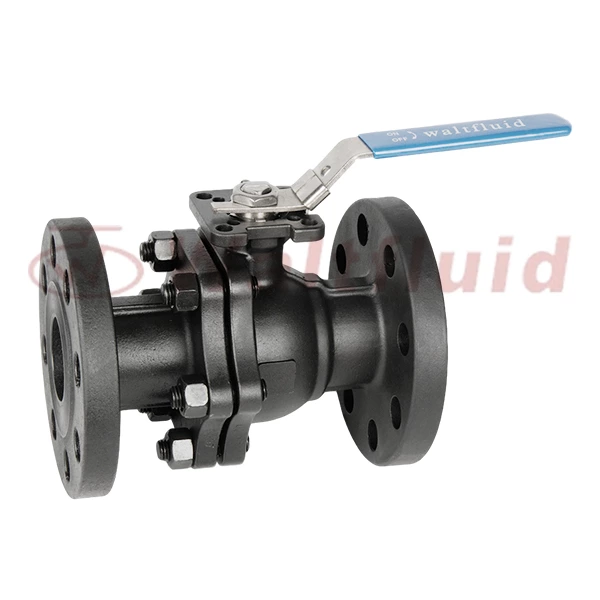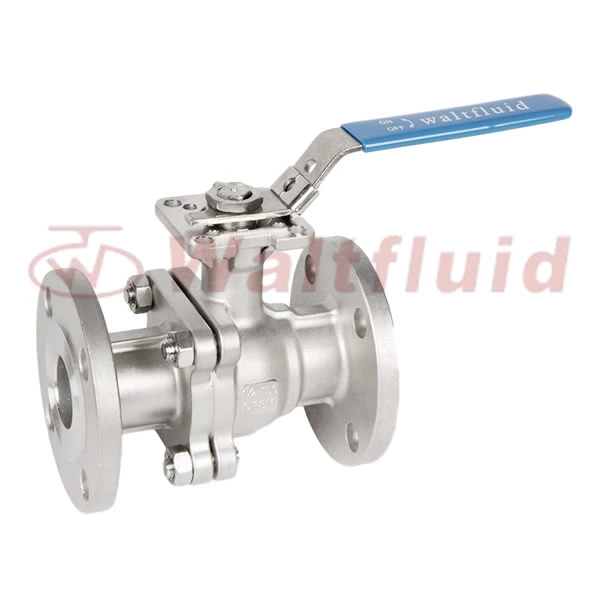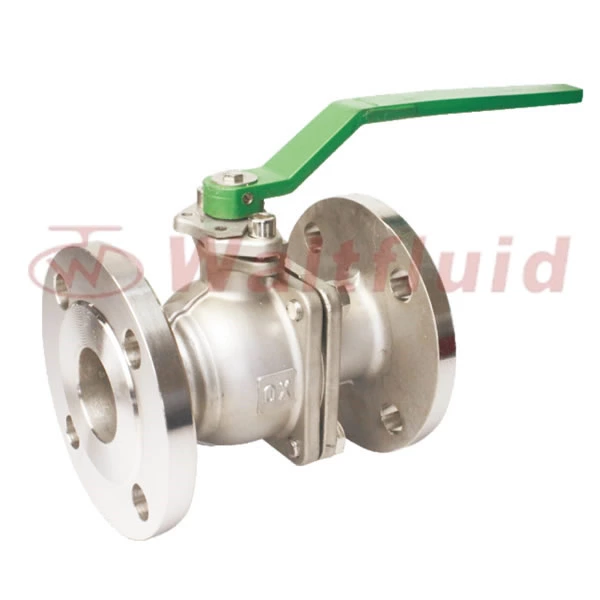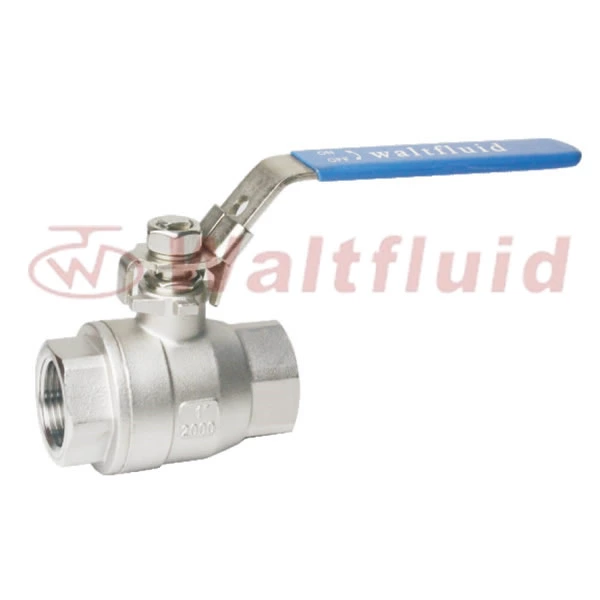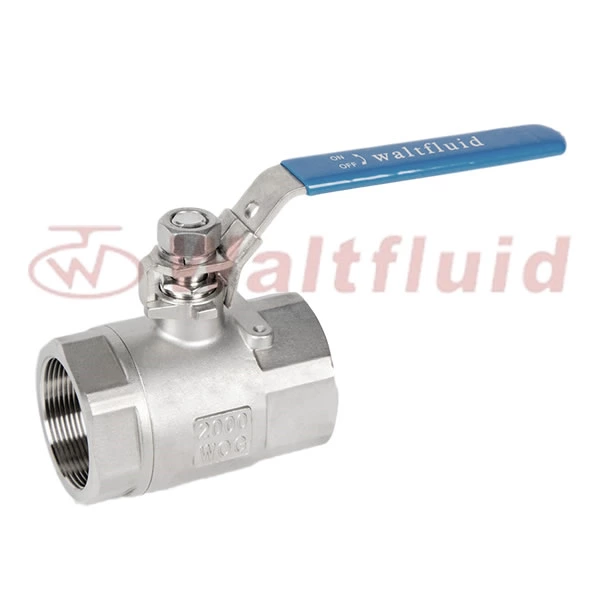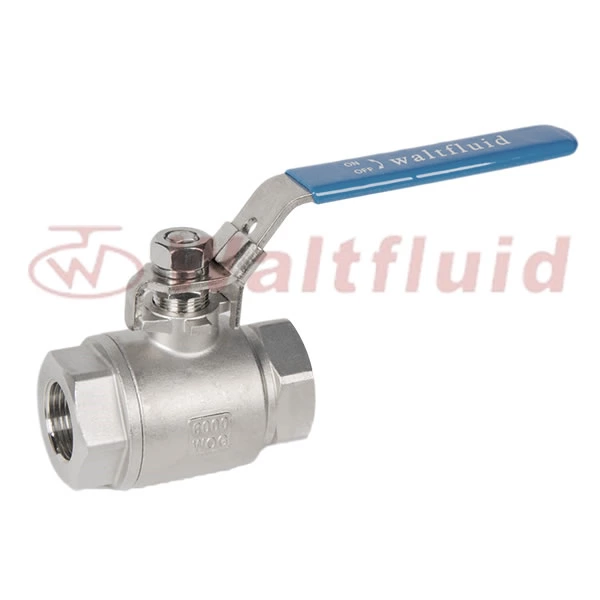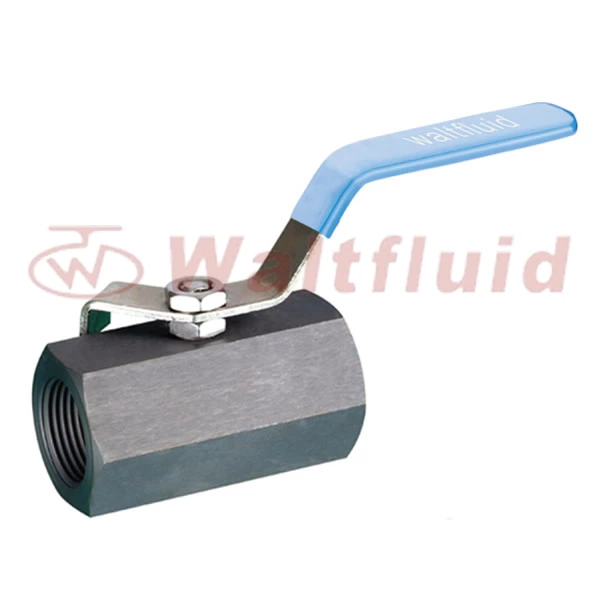A Brief Summary And Working Principle Of Conventional Ball Valves
2 Piece Threaded Ball Valve evolved from a plug. Its opening and closing part is a ball. The valve is switched by rotating the valve stem 90 degrees. The ball valve is mainly used to cut off, distribute and change the flow direction of the medium on the pipeline. The ball valve designed with a V-shaped opening also has good flow regulation performance.
The ball valve opens and closes quickly, has good sealing, simple structure, low flow resistance, and is widely used in modern industrial occasions.
According to the structural form, the ball valve can be divided into fixed ball valve, floating ball valve, track ball valve, V-shaped ball valve, eccentric half ball valve, three-way ball valve, four-way ball valve, etc.; according to the connection method, it can be divided into flange ball valve, wafer ball valve, internal thread ball valve, external thread ball valve, welding ball valve, clamp ball valve (generally sanitary ball valve), sleeve ball valve, etc.; according to the sealing material, it can be divided into soft-sealed ball valve and metal hard-sealed ball valve.
Soft-sealed ball valves are generally suitable for media with a temperature of less than about 150 degrees. For media above 150 degrees, PPL seals or metal seals are used.
Small-diameter ball valves are generally floating ball valves. Large-diameter ball valves often use fixed ball valves because the opening and closing torque required is relatively large. This can reduce the torque required for opening and closing and improve the reliability of work. V-type ball valves and eccentric semi-ball valves can be used to adjust the flow rate, while three-way ball valves and four-way ball valves are used to change the direction of the fluid.
Common materials for ball valves are carbon steel, 304 stainless steel, and 316 stainless steel. For highly corrosive media, the valve body and ball are fully lined with polytetrafluoroethylene.
The main driving methods of ball valves are electric drive and worm gear drive. Small-diameter manual ball valves are generally opened and closed with a handle.
Fixed ball valves are all equipped with floating valve seats. After being subjected to the pressure of the medium, the valve seat moves, so that the sealing ring is pressed tightly against the ball to ensure sealing. Bearings are usually installed on the upper and lower shafts of the ball. The operating torque is small and it is suitable for high-pressure and large-diameter valves. In order to reduce the operating torque of the ball valve and increase the reliability of the seal, an oil-sealed ball valve has appeared in recent years. It not only injects special lubricating oil between the sealing surfaces to form an oil film, but also enhances the sealing performance and reduces the operating torque. It is more suitable for high-pressure and large-diameter ball valves. Fixed ball valves, flange gate valves, flange butterfly valves and oxygen pressure reducing valves are valves of the same type. The difference is that its closing piece is a sphere, which rotates around the center line of the valve body to achieve a valve that is opened and closed. Ball valves are mainly used in pipelines to cut off, distribute and change the flow direction of the medium.
Eccentric semi-ball valve is a relatively new type of ball valve. It has some advantages unique to its structure, such as no friction when switching, the seal is not easy to wear, and the opening and closing torque is small. This can reduce the specifications of the actuator. Equipped with a multi-turn electric actuator, it can achieve the adjustment and strict shutoff of the medium. It is widely used in petroleum, chemical industry, urban water supply and drainage and other working conditions that require strict shutoff. It relies on a rotating valve chain to make the valve unblocked or blocked. The ball valve is light and small in size. It can be made into a large diameter. It has reliable sealing, simple structure, and convenient maintenance. The sealing surface and the spherical surface are often in a closed state. It is not easy to be eroded by the medium. It is widely used in various industries.
This kind of ball valve belongs to a fixed ball valve and a single valve seat sealed ball valve. The adjustment performance is the best among ball valves. The flow characteristics are equal percentages, and the adjustable ratio is up to 100:1. There is a shearing effect between its V-shaped cut and the metal valve seat, which is particularly suitable for media containing fibers, tiny solid particles, slurry, etc.
The ball valve has the same 90-degree rotation action. The difference is that the plug body is a sphere with a circular through hole or channel passing through its axis. The ball valve is mainly used in the pipeline to cut off, distribute and change the flow direction of the medium. It only needs to rotate 90 degrees and a very small torque to close tightly. The ball valve is most suitable for use as a switch and cut-off valve, but recent developments have designed the ball valve to have the function of throttling and controlling flow, such as the V-type ball valve.
Working principle of track hard seal ball valve: The principle of cam makes the valve ball separate from the valve seat sealing surface during rotation, and pushes the valve ball to the valve seat to achieve sealing after rotating in place. When the valve is in the fully open position, turn the handwheel clockwise instantaneously, and the valve stem begins to descend and drives the ball to rotate with the stem nut and thrust bearing. Connect and turn the handwheel, the precision spiral curve groove track on the valve stem interacts with the guide pin embedded in it, driving the ball to rotate clockwise with the valve stem continuously. When the valve is about to close, the valve stem drives the ball to rotate 90° without friction with the valve seat sealing surface. Continue to turn the handwheel, and the valve stem that descends again mechanically presses the ball through the cam structure at the lower end of the valve stem, so that the ball sealing surface is in close contact with the valve seat sealing surface, thereby achieving the purpose of sealing. When the track hard seal ball valve is in the fully closed position, turn the handwheel counterclockwise, and the valve stem begins to rise with the cooperation of the valve stem nut and thrust bearing, and drives the ball to rotate. Continuously turn the handwheel, and the valve stem will drive the ball toward the valve seat while rising. When the track hard seal ball valve is about to open, the precise spiral groove track on the valve stem interacts with the guide pin embedded in it to drive the ball to rotate counterclockwise without friction with the valve seat sealing surface. Continue to turn the handwheel, when the valve stem rises to the limit position, the ball has also reversed 90° with the valve stem, and the valve is in the fully open position. Structural features of track hard seal ball valve: Traditional ball valves, whether floating or fixed, always have contact between the ball and the valve seat, large switching torque, and easy damage to the sealing surface. When the track ball valve is opened and closed, the ball first deflects -δ angle, and then rotates. During the whole process of switching, the ball and the valve seat are separated, so the valve seat will not be scratched, and the opening and closing torque is small.
The valve seat of the floating ball valve is mostly made of high molecular polymer materials such as polytetrafluoroethylene and para-polyphenylene, which have good sealing performance, but the material is relatively soft. Since the material is relatively soft, but a certain sealing pressure ratio must be achieved, the opening and closing torque will inevitably increase. In order to improve this situation as much as possible, our company adopts a double-bevel elastic sealing ring or a V-groove elastic sealing ring structure design, using the pressure in the pipeline to push the ball to help seal. When the medium pressure is small, the contact area between the sealing ring and the ball is small, so there is a larger sealing pressure ratio to ensure reliable sealing. When the medium pressure is large, the contact area between the sealing ring and the ball increases. Therefore, the sealing ring can withstand a large medium thrust without damage. For ball valves with very low working pressure, considering that the medium pressure cannot ensure reliable sealing of the valve seat, and the preload force will decay after long-term use, for ball valves used in low-pressure, ultra-low-pressure or vacuum conditions, a spring-loaded valve seat sealing structure is used to ensure long-term and reliable sealing of the ball valve. Suitable for frequent operation, quick opening and closing, light, small fluid resistance, simple structure, relatively small size, light weight, easy maintenance, good sealing performance, not limited by the installation direction, the flow direction of the medium can be arbitrary, no vibration, and low noise.
Three-way ball valves are available in T-type and L-type. The T-type can interconnect three orthogonal pipelines and cut off the third channel, playing the role of diversion and confluence. The L three-way ball valve type can only connect two orthogonal pipelines, and cannot keep the third pipeline connected at the same time, and only plays a distribution role. The three-way 4-sided valve seat ball valve with L-type flow channel adopts a 2-sided valve seat. It is mainly used for flow path reversal.
The three-way 4-sided valve seat ball valve with T-type flow channel adopts a 4-sided valve seat, which is balanced by force to ensure reliable sealing on the closed channel. It is mainly used for diversion, mixing, reversing and full opening of three channels.
The "LL" type four-way ball valve only needs to operate the wrench or actuator to turn the ball 90 degrees, and the flow direction of the two media can be switched at the same time, which is convenient and quick, and achieves the effect of one valve for multiple uses. The four-way reversing ball valve can realize the switching of forward and reverse water supply with one valve. The water supply mode is switched once every 90° rotation. Four valves were needed before. When supplying water, valves 1 and 4 are opened, and valves 2 and 3 are closed; when supplying water in reverse, valves 2 and 3 are opened, and valves 1 and 4 are closed. Now a four-way ball valve is used instead, which is easy to operate.
(The above is the summary and principle of conventional ball valves)
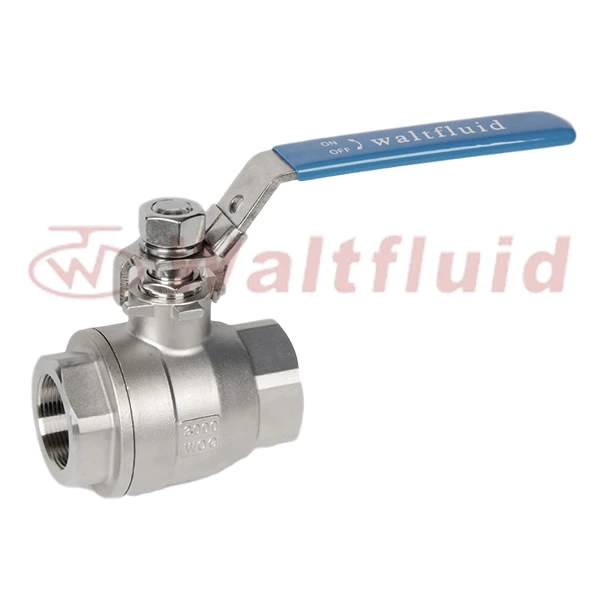
 English
English 中文
中文 Pусский
Pусский  Español
Español
